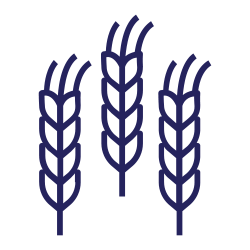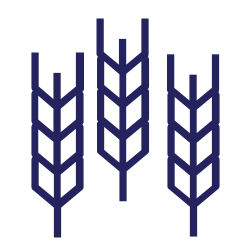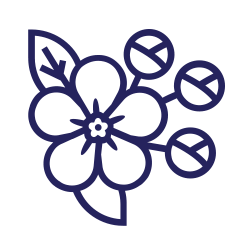Section Title
Are you considering an early season fungicide application for control of cereal leaf diseases?
Crop Types
- Wheat
An important management decision farmers face is whether a fungicide application for early control of cereal pathogens is required. A one-pass system that controls stubborn, residue-born leaf diseases and weeds may seem like a convenient option. However, two recent studies have found no significant improvement in yield or disease control when a fungicide was applied at herbicide timing.
The first study was conducted on barley during the 2010-2012 growing seasons, at six sites across western Canada (Turkington et al. 2015). Treatments included varying herbicide and fungicide combinations, rates and application times. The most detected early season pathogen was net-form net blotch (D. teres f. maculata). A key finding was that a half rate of fungicide applied with herbicide at the 2-3 leaf stage did not significantly reduce disease on the upper canopy compared to the herbicide only check treatment. This makes sense, as current fungicides registered in Canada have varying amounts of systemic movement. Only healthy tissue that is emerged at the time of application is protected. Another key point to consider is that delaying a herbicide application until the 5-6 leaf stage resulted in decreased yield from increased weed pressure.
Ultimately, the study suggests that when considering a fungicide application for control against cereal leaf diseases, protection of the upper canopy should be the primary goal. Application of fungicides early in the season had much less effect on disease, yield and kernel quality than when a fungicide was applied to the upper canopy.
A second study, performed at four sites in Alberta over the 2018 and 2019 growing seasons, looked at the effect of fungicide timing on disease control, yield and quality of two Canadian Western Red Spring (CWRS) wheat varieties (AAC Brandon & AAC Viewfield) (Asif et al. 2021). Treatments included fungicide application at herbicide timing, plant growth regulator (PGR) timing, flag leaf timing, and anthesis timing. Findings agreed with Turkington et al. (2015), as no significant yield difference was found between fungicide application at herbicide timing or PGR timing and the untreated control. This work suggests that the most economic timing for fungicide applications in spring wheat were at flag leaf or anthesis timings.

Figure 1. Percent (%) contribution to yield in wheat and barley. Image courtesy of Alberta Wheat and Barley Commissions.
References
- Turkington, T.K., O’Donovan, J.T., Harker, K.N., Xi, K., Blackshaw, R.E., Johnson, E.N., Peng, G., Kutcher, H.R., May, W.E., Lafond, G.P., Mohr, R.M., Irvine, R.B., and Stevenson, C. 2015. The impact of fungicide and herbicide timing on foliar disease severity, and barley production and quality. Can. J. Plant Sci. 95: 525-537. DOI: https://doi.org/10.4141/cjps-2014-364
- Asif. M., Strydhorst, S., Strelkov, S.E., Terry, A., Harding, M.W., Feng, J., and Yang, Y.C.. 2021. Evaluation of disease, yield and economics associated with fungicide timing in Canadian Western Red Spring Wheat. Can. J. Plant Sci. DOI:10.1139/CJPS-2020-0318








